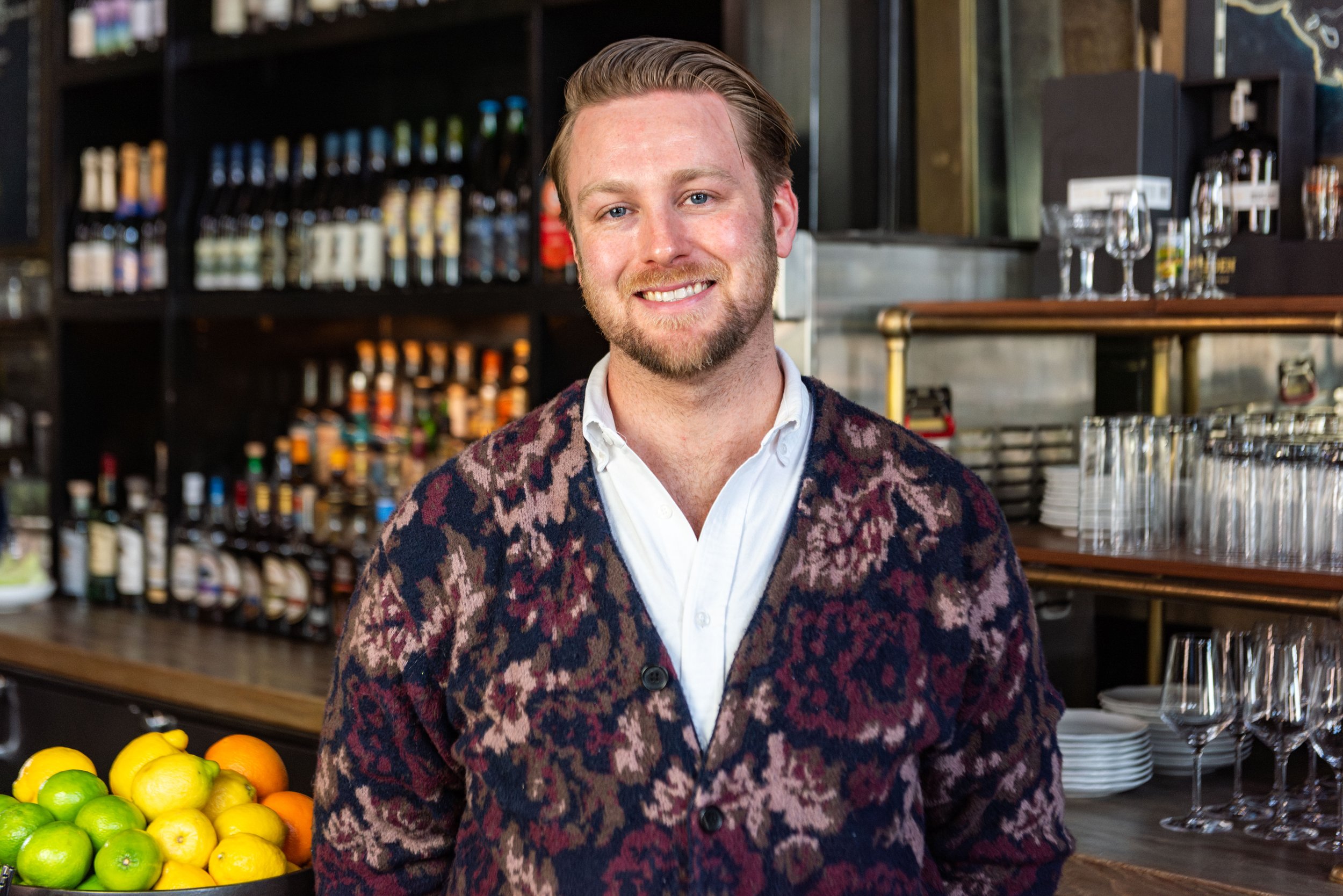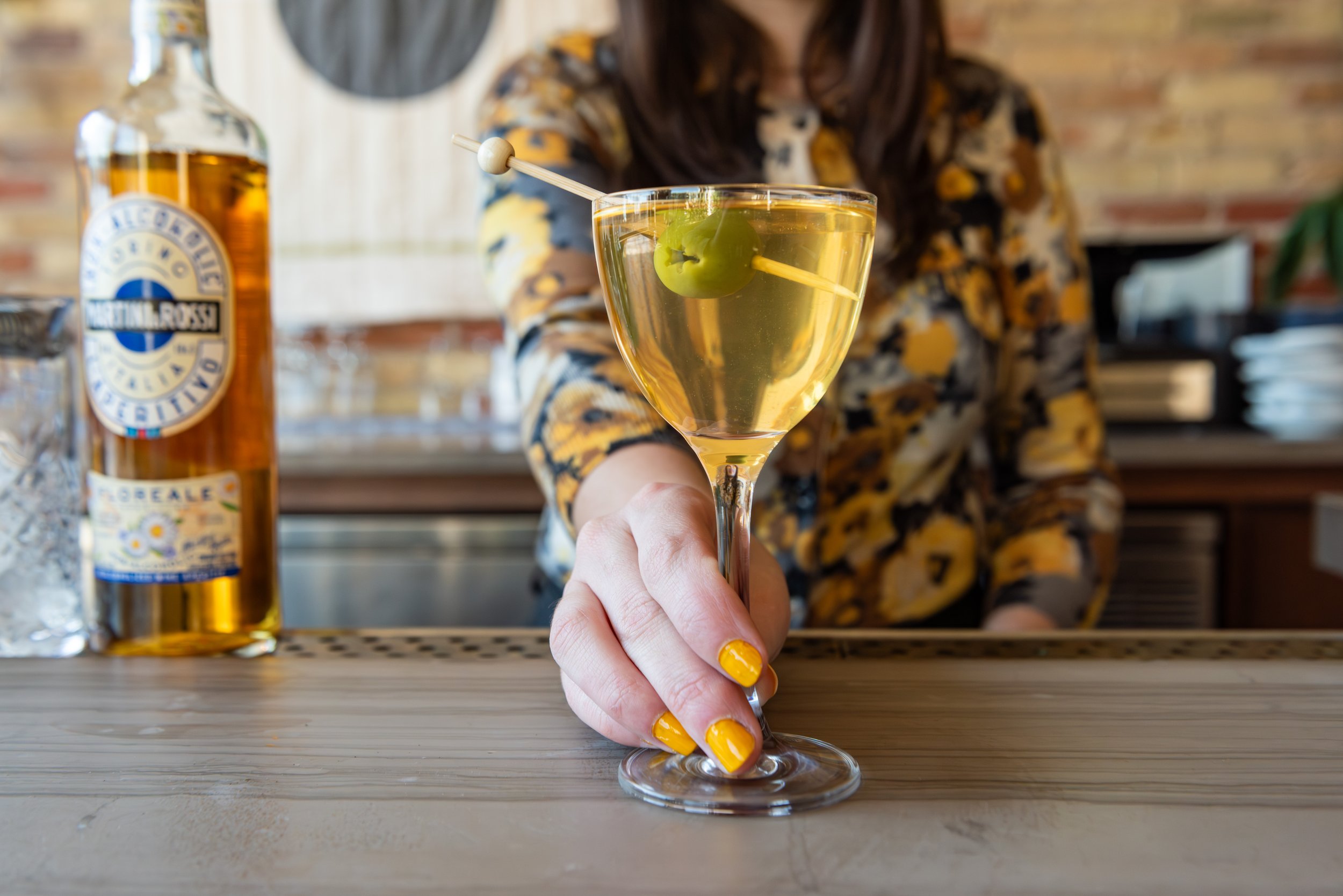Good To Go
New York City bartenders are taking advantage of the legalization of to-go cocktails with creative methods and packaging.
photos: jaclyn warren
During spring’s bar closures, one legal change ushered in a new culture of drinking: a March 16 governor’s order that permits the sale of alcohol to-go. New Yorkers could order their cocktails from windows or delivery services, and streets such as Doyers in Chinatown or Vanderbilt Avenue in Brooklyn closed down to essentially serve as outdoor pub crawls. Without this adjustment, bars might have been left twisting in the wind, as the city is still not back at full capacity.
As laws continued to shift, adding 25 percent capacity and a 10 p.m. curfew, many bartenders and owners have embraced the opportunity as a way to showcase their creativity and to ensure their very survival, finally free from New York’s somewhat draconian alcohol laws.
Through Caviar, the libation haven Attaboy has started selling cocktail kits, as well as 15 pre-made cocktails. “We took the easy approach with our greatest hits,” Head Bartender Haley Traub says. Served in compostable deli containers, all cocktails are made fresh and to-order and come with a large block of ice on the side as not to dilute the cocktail en route. “We are still staying true to ourselves,” says Traub, who has partnered with Love, Nelly to meet the new food requirement with fresh empanadas.
For some bars, research and development has yielded surprising results in the time of COVID-19. At Amor y Amargo in the East Village, Head Bartender Blake Walker joined forces with Bartender Sean Johnson, formerly of Gabriel Kreuther, in May to launch Day & Night Cocktails: seasonal sets of two drinks, one more light and sunny with the other being darker and richer, bottled and available for delivery. “It was a way of mitigating our grief for an industry that was falling apart before our eyes,” Walker says. The fall iteration of Day was made from a base of Ethopian mead called Axum Tej, mixed with white rum, rhum agricole, apricot liqueur, manzanilla sherry, and a tincture from hops. Night included chamomile-infused genever, oak-washed rye, Amaro Averna, and Cointreau.
blake walker’s seasonal set of to-go cocktails
Quality Bistro’s canned cocktails
A two-serving bottle costs $20, while a larger bottle is $75, and Day & Night does in-person drop-offs in most of Brooklyn and lower Manhattan.
“This time has been a test balloon to see if it’s a viable business and if we love doing it, and, lo and behold, it is, and we do,” Walker says. The bottle delivery has enjoyed success with repeat patrons and a healthy roster of orders, indicating a possible future for bottled, mobile cocktails in New York.
The Perennial Gimlet (full recipe here), served at Crown Shy in the Financial District, is a cocktail made with “perennial” ingredients. This pre-batched drink, sold for $75, is available to go and comes with hummus, nduja and pita. Rising Star Bartender Harrison Ginsberg, who has spent these past months doing research and development, has not been deflated by the pandemic. He views innovation, like the to-go Perennial Gimlet, as part of his evolving job. “This is what I’ve always wanted,” he said. “We have a great team. We have a strong team.”
Eryn Reece’s Moonraker Sail
Bar Director Eryn Reece of the Lower East Side’s Banzarbar and Freemans Restaurant recently began bottling cocktails and notes that some techniques, such as pre-batching and fat-washing, have seen an increase in popularity because they can be done in advance. Her Moonraker Sail cocktail puts an EVOO twist on fat-washing, along with its shochu, London Dry, Blanco Vermut, apricot, and plum.
Meanwhile, Quality Bistro’s Bryan Schneider has been teaching himself how to operate a canning machine so he can translate his drinks to to-go. Customers can order a four-pack of some of the restaurant’s signatures—such as the Bistro Spritz with prosecco, Grey Goose, St-Germain, and grapefruit, or the Le Spicy with Ancho Verde, Bombay Sapphire gin, lime, tarragon, and cucumber—from cutely branded cans. One of Schneider’s top drinks, the Old Fashioned Au Poivre, inspired by the sauce, has been translated to a large-format bottle, begging the question of whether to-go cocktails are just a way to survive, or the future of bartending.










